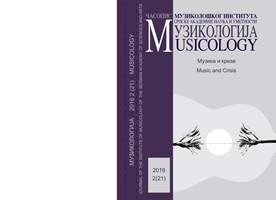Организација наставе солфеђа у Србији од друге половине XIX века до данас – достигнућа и тековине
The Organisation of Solfège Pedagogy in Serbia from the Second Half of the 19th Century until Today –Achievements and Attainments
Author(s): Kristina ParezanovićSubject(s): Music, History of Education, 19th Century, Sociology of Art, Sociology of Education, History of Art
Published by: Muzikološki institut SANU
Keywords: music pedagogy; organization of solfege teaching; Serbian and Western European artistic and pedagogical practice;
Summary/Abstract: This research focuses on the development of art music, music pedagogy and teaching solfège in Serbia in the long period stretching from the second half of the 19th century until the present day. In this article I present a chronology of the institutionalisation of the music education system in Serbia; then, I discuss the origins of the influence of Western European artistic-pedagogical practices on Serbian teaching, through the testimonies by Stevan Hristić, Berthold Hartmann, Miloje Milojević, Stanislav Vinaver, Milan Grol and others. I finish with the presentation of the most important Serbian music pedagogues and their achievements in the period before World War II (Stevan Stojanović Mokranjac, Isidor Bajić, Miloje Milojević, Miodrag Vasiljević) in parallel with the results and practices of the Western European and global music pedagogy. My goal is to observe Serbian approaches to music pedagogy in relation to the question of the possibilities, realistic or hypothetical, to use the educational principles which were in expansion in Europe at the end of the 19 th and beginning of the 20th centuries in Serbian music pedagogy. After examining the methods of teaching solfège in the period from the end of World War II until today, I conclude that Serbia has developed its own pedagogic style (even though it is based on the complementarity of several autochthonous and foreign methodical solutions), built upon and supperted by the experience and knowledge of Serbian and foreign attainments in music pedagogy.
Journal: Muzikologija
- Issue Year: 2/2016
- Issue No: 21
- Page Range: 27-50
- Page Count: 24
- Language: Serbian

